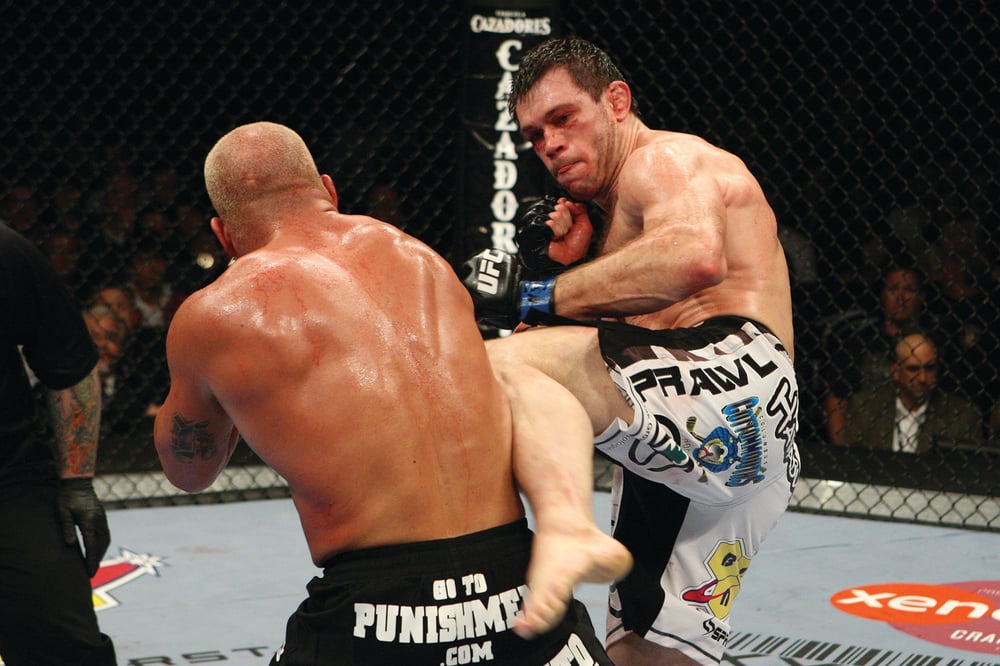
Issue 061
April 2010
What is it?
There are many small bones that make up the foot, and fractures to one or more are relatively common in MMA. They can range from tiny cracks in the bone to compound fractures or fractures / dislocations that may require surgery. The most commonly broken bones in the foot are the metatarsals: the long bones that run from the base of the toes to the middle of the foot. Symptoms of a foot fracture include pain, bruising and difficulty putting weight on the foot.
How it happens
There are many different ways to break a foot in MMA. It might happen from a kick that connects badly with an elbow, a foot stomp, a trip or sweep, an awkward landing or (very occasionally) a foot or ankle lock. Fighters who do a lot of running or skipping in preparation for a fight may also be susceptible to stress fractures that are caused by repetitive stress on the bones.
Who has it happened to?
Forrest Griffin went in to his fight against Tito Ortiz at UFC 106 with a broken foot that he sustained in training. Despite this, he managed to fight three rounds and win a tough split decision.
Kalib Starnes was criticized after his fight with Nate Quarry, at UFC 83, for backpedaling and fighting defensively. He later cited a broken foot as the reason, having apparently injured it when throwing a kick early in the fight.
What problems is it likely to cause?
Rarely, there may be complications that occur at the time of the break or shortly after, such as infection, or damage to nerves or blood vessels.
If a fracture doesn’t heal properly then it can cause pain or other problems in the future. Sometimes a fighter may experience difficultly with the foot in training even after the initial fracture has been resolved. Depending on the location and severity of the fracture, the injury can sometimes lead to the development of arthritis in the foot later in life.
Treatment
Minor foot-fractures may need no treatment except rest. You may be advised to use crutches in the initial healing period, in order to avoid putting weight on the injury. Some breaks will require a cast and a period of immobilization, and others may need surgery to realign the bone(s). Occasionally, metal plates and pins may be used to hold the bones in place while they heal. These are often left in place but may sometimes be removed later on.
How long can a fighter expect to be out for?
Recovery time very much depends on the severity of the injury. An uncomplicated fracture may be healed in six weeks; if surgery is needed then it may take several months. Forrest Griffin is medically suspended for six months following his UFC 106 fight, unless he is cleared sooner by a doctor.
...










